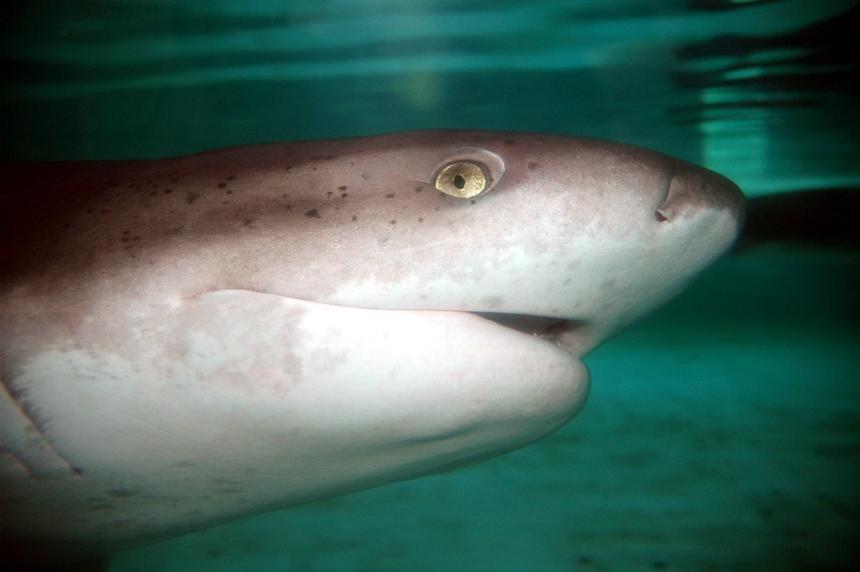Moderate
The range of the broadnose sevengill shark is from the western Pacific Ocean off of China, Japan, Australia, and New Zealand, the eastern Pacific Ocean, and the southern Atlantic Ocean off of Argentina and South Africa. Large individuals tend to live in deeper offshore environments; however, most individuals live in either the deep channels of bays, or in the shallower waters of continental shelves and estuaries. These sharks are caught incidentally in the commercial fishery off the outer Washington coast with longline and jig handline gear.
Description and Range
Physical description
The broadnose sevengill shark is a large species with a thick body, broad head, and blunt snout. The dorsal surface is silver-gray to brown and the ventral side is very pale. The body and fins are covered in small black and white spots. This species has a single dorsal fin that is set far back along the spine, behind the pelvic fins towards the tail fin. The upper portion of the tail fin is much longer than the lower portion and is slightly notched near the tip. This shark has jagged, saw-like teeth in the upper jaw (except for one middle tooth), and comb-shaped teeth in the lower jaw. This shark is distinguished because of its seven gill slits, while most shark species have five.
Broadnose sevengill sharks can grow up to 300 cm (9.8 ft) in length, and 107 kg (236 lbs) in weight. Maximum age is 49 years old.
Ecology and life history
The broadnose sevengill shark will feed on just about anything! This includes other sharks, seals, rays, chimaeras, bony fish, hagfish, dolphin and porpoise meat, shark egg cases, sea snails and mammalian carrion, including rats!
Geographic range
The range of the broadnose sevengill shark is from the western Pacific Ocean off of China, Japan, Australia, and New Zealand, the eastern Pacific Ocean, and the southern Atlantic Ocean off of Argentina and South Africa. Large individuals tend to live in deeper offshore environments as deep as 136 m (446 ft). However, most individuals live in either the deep channels of bays, or in the shallower waters of continental shelves and estuaries. Seasonal movements into and out of estuaries, including Willapa Bay and Grays Harbor, occur for mating and pupping.
Climate vulnerability
Sensitivity to climate change
Moderate
Though limited information is available regarding the sensitivity of broadnose sevengill sharks to climate change (particularly in Washington), there are a number of ways in which this species may be sensitive to changing ocean conditions. In general, increases in temperature may affect movement and migration patterns of sharks. Currently, the warmer summer waters of Willapa Bay where most broadnose sevengill sharks are found are thought to have foraging and reproductive benefits for sharks, but shifts in temperature, changes in ocean circulation that lead to decreased productivity, or decreases in oxygen and resulting declines in prey availability could make this area less optimal. Because sevengill sharks target a broad range of prey, they may be more adaptable to shifts in prey composition but their high site fidelity to particular areas in Willapa Bay, as well as their life history characteristics (slow growth, long generation times, low fecundity) may increase their sensitivity to any climate-induced changes in habitat conditions. Overall, the generalist nature of their diet, ability to migrate to and from California and use diverse estuaries, and general hardiness suggest limited climate-related impacts.
Exposure to climate change
Moderate
- Increased ocean temperatures
- Altered circulation patterns
- Decreased oxygen
Regulations
Rules and seasons
Recreational fishing for broadnose sevengill sharks is closed in all Washington waters.
